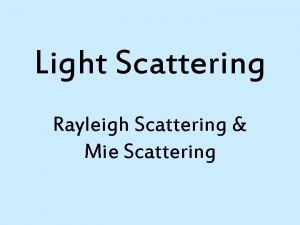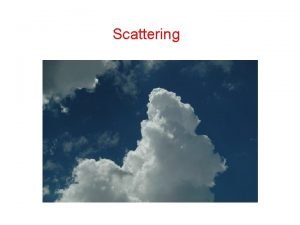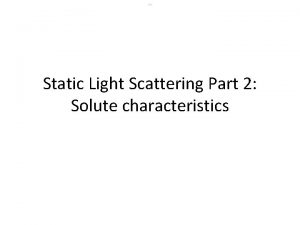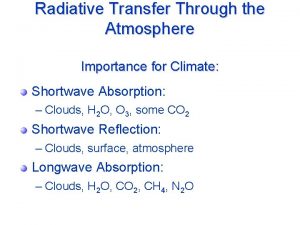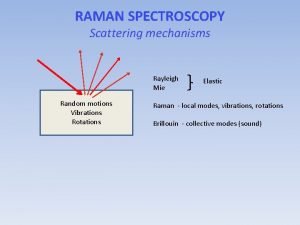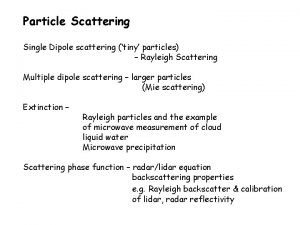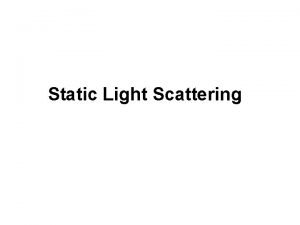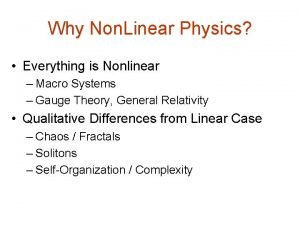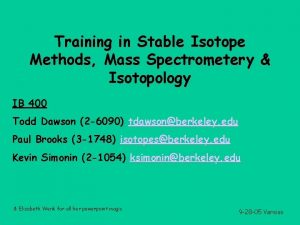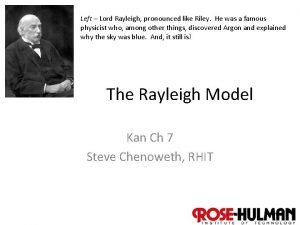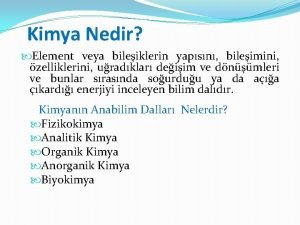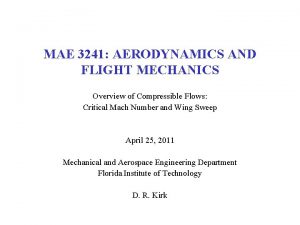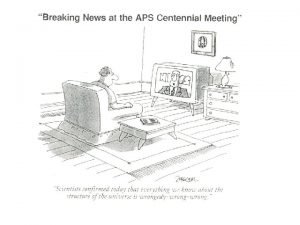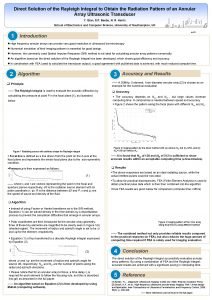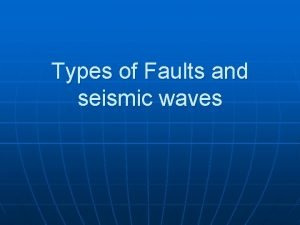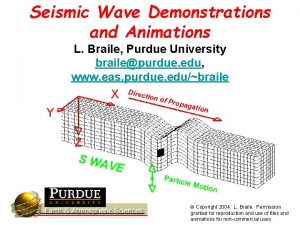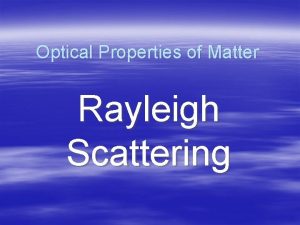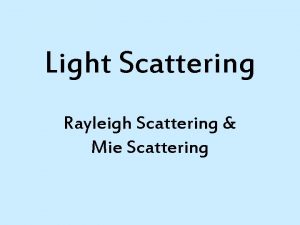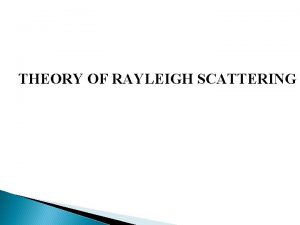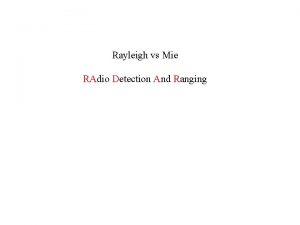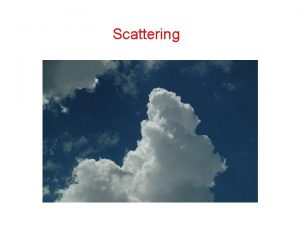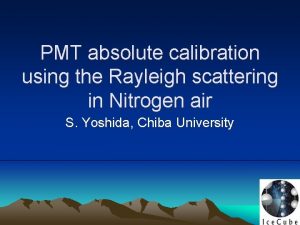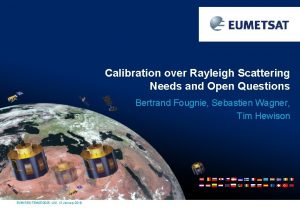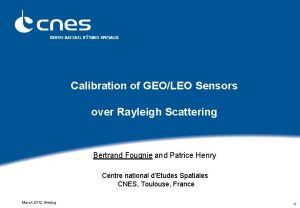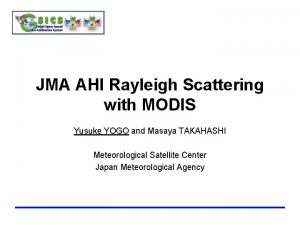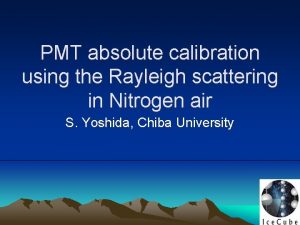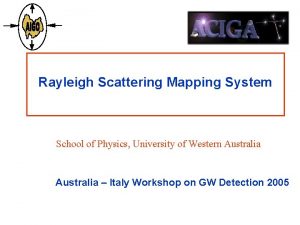Rayleigh scattering Rayleigh Scattering Rayleigh scattering refers to

















- Slides: 17


Rayleigh scattering




Rayleigh Scattering Rayleigh scattering refers to the scattering of light off of the molecules of the air, and can be extended to scattering from particles up to about a tenth of the wavelength of the light. It is Rayleigh scattering off the molecules of the air which gives us the blue sky. Lord Rayleigh calculated the scattered intensity from dipole scatterers much smaller than the wavelength to be:

Rayleigh scattering can be considered to be elastic scattering since the photon energies of the scattered photons is not changed. Scattering in which the scattered photons have either a higher or lower photon energy is called Raman scattering. Usually this kind of scattering involves exciting some vibrational mode of the molecules, giving a lower scattered photon energy, or scattering off an excited vibrational state of a molecule which adds its vibrational energy to the incident photon.




Mie Scattering The scattering from molecules and very tiny particles (< 1 /10 wavelength) is predominantly Rayleigh scattering. For particle sizes larger than a wavelength, Mie scattering predominates. This scattering produces a pattern like an antenna lobe, with a sharper and more intense forward lobe for larger particles.

Mie scattering is not strongly wavelength dependent and produces the almost white glare around the sun when a lot of particulate material is present in the air. It also gives us the white light from mist and fog. Greenler in his "Rainbows, Haloes and Glories" has some excellent color plates demonstrating Mie scattering and its dramatic absence in the particle-free air of the polar regions.


Amplitude squared effect Uncorrelated and correlated amplitudes



 Rayleigh theory of light scattering
Rayleigh theory of light scattering It is the scattering of light
It is the scattering of light Rayleigh theory of light scattering
Rayleigh theory of light scattering Rayleigh scattering
Rayleigh scattering Rayleigh scattering
Rayleigh scattering Mie scattering vs rayleigh
Mie scattering vs rayleigh Horizontal
Horizontal How to plot zimm plot in excel
How to plot zimm plot in excel Macros rayleigh
Macros rayleigh Sap calculations rayleigh
Sap calculations rayleigh Rayleigh distillation
Rayleigh distillation Lord rayleigh pronunciation
Lord rayleigh pronunciation Wien sabiti
Wien sabiti Mach number formula
Mach number formula Velocity dependent potential and dissipation function
Velocity dependent potential and dissipation function Rayleigh integral
Rayleigh integral What is fault
What is fault Love and rayleigh waves animation
Love and rayleigh waves animation
